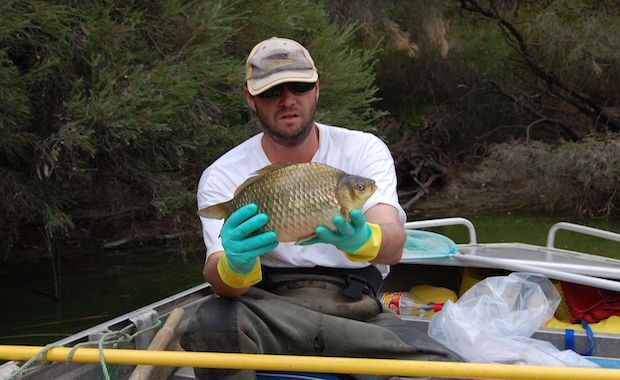Advertisement
Check Out What Happens When a Goldfish Gets Released Into a Public River
By Margo Gothelf
2 min read
Advertisement - Continue reading below

Next time you let a goldfish go in a public body of water, you may want to think twice.
For the past 12 years researchers from the Centre of Fish and Fisheries at Murdouch Universtiy have been trying to stop people from letting goldfish go in the Vasse River in Western Australia. The tiny fish are causing quite the uproar for native fish and the natural ecosystem.
Stephen Beatty and other researchers published their findings about the house pet in the journal, Ecology of Freshwater Fish.
Beatty shared with Mashable that his intention for researching the fish was a rise in the population in the Vasse River.
“We think it’s a major factor, people letting their aquarium species go. Unwanted pets, basically. They can do quite a lot of harm,” Beatty shared.

While the goldfish may seem harmless, they have pretty destructive eating habits. They also “deteriorate the quality of water by stirring up sediment on the bottom of river beds, dig up vegetation and also consume anything edible that comes before them — including native fish eggs,” shared Mashable.
The fish also take up space from fish that belong in the river and pass on new diseases.
The most interesting fact about the goldfish living in the wild is how big they manage to get. Researchers were able to find goldfish that were 4.1 pounds and can travel a surprising 142 miles in one year.
“We didn’t think goldfish were that mobile,” Beatty said. “What this study shows is that they are quite mobile, but I think it’s mostly to do with feeding and foraging.”
The goldfish also began to reproduce in the river, adding a new factor for Beatty and his research.
“It gives us better clarity on how to control them. That wetland has only a small opening, so we think we can manufacture some sort of trap to catch them when they go in to breed,” he said.

Right now the biggest issue is how to control them. Beatty explained that nets and electrofishing can be a productive way to remove the fish, but the biggest cure would be prevention.
“The key thing is if you’ve got unwanted pets, you can see if the pet shops will take them back. But if you’re going to euthanize them, putting them in the freezer is the most humane way,” Beatty said.
He continued, “But just letting go of a pet, no matter how innocuous you think it is in your aquarium, or how pretty it is, can potentially cause a lot of damage. Not all fish you let go will form a self-maintaining population, but we’re finding more and more that do.”
(H/T Mashable)
Advertisement - Continue reading below
